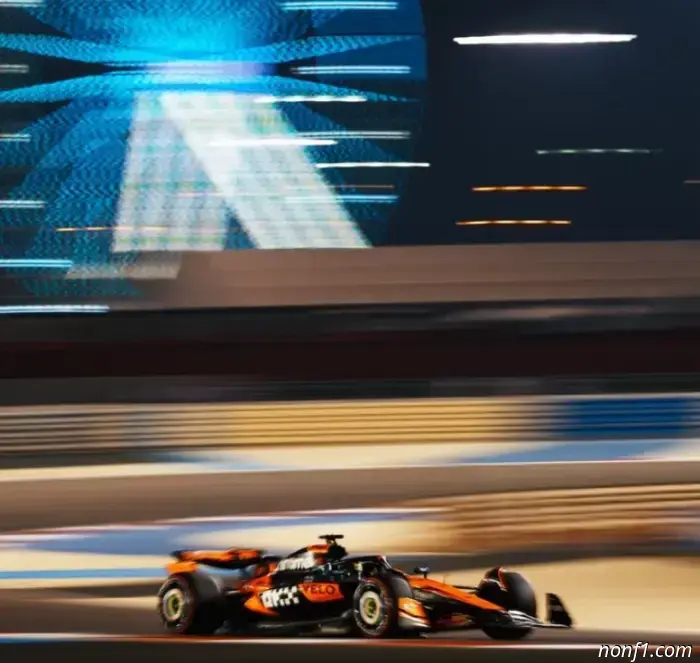
Mark Hughes on the reasons for McLaren's advantage in Bahrain
Mark Hughes, an experienced expert at the British edition of The Race, discusses what explains the size of McLaren's advantage in Bahrain, which was already evident in training. Therefore, it is likely that this will be the case in the remaining days of the weekend.
The previous time Formula 1 cars were running on the Sahir circuit was just a month and a half ago, but the weather conditions during yesterday's Friday practice sessions preceding the Bahrain Grand Prix were completely different, and this affected the behavior of the cars. More precisely, rubber.
The level of grip and the degree of degradation on the highway at a temperature of + 36 degrees are not at all the same as they were in the tests, when the asphalt warmed up only to 16-18 degrees.
"On the one hand, everything seems almost scary, but nevertheless we showed a relatively good pace," Lando Norris said yesterday.
He somewhat downplays the size of McLaren's advantage on this track, because it is in Sahir that the rear tires experience the greatest loads among all the tracks on the calendar, and it can be called McLaren's ideal territory.
Do you remember how the orange cars broke away from everyone else in the last sector of the lap during qualifying at Albert Park, when all the competitors there had overheated tires? Or how, after ten laps of the Australian Grand Prix, they increased the gap from Max Verstappen's Red Bull by almost a second? It was mostly for the same reason.
Neither in Shanghai nor in Suzuka does the rear tires experience such loads. But in Bahrain, this problem has returned – and it is not surprising that McLaren dominates here.
It seems that on one fast lap, the advantage is about 0.5 seconds. Oscar Piastri and his team–mate showed their best results in about the same minute of the session as the Mercedes drivers, with George Russell third and Kimi Antonelli fifth. Verstappen clocked seventh, but the difference between 3rd and 7th results is only 0.3 seconds, and this is much less than the size of the McLaren advantage over Russell.
Charles Leclair moved up to 4th place, but his result was affected by the fact that he did not have time to complete another fast lap on soft tires when the condition of the track improved somewhat. Lewis Hamilton was also driving the same Ferrari with improved graphics, but he had an acute moment, so he couldn't improve on the second set of Soft.
Friday's practice sessions showed that Mercedes, although noticeably lagging behind, are confidently in second place in terms of speed, and they have a clear advantage over Red Bull and Ferrari.
Mercedes cars in Bahrain have a relatively "skinny" rear wing, due to which the team is trying to achieve the most efficient operation of the aerodynamic body kit, and at the end of the start-finish straight, Russell's advantage in maximum speed compared to Piastri reached 11 km/ h.
On the next straight leading to Turn 4, Russell gained even more time and was already 0.3 seconds ahead at the exit of this turn. But in the fast turns of the second sector of the lap, the McLaren is in its element.
By the time he got out of Turn 8, Piastri had already completely regained the gap, and for the rest of the lap he was just pulling away, and the rear tires on his McLaren were definitely in the best condition. When Oscar completed the lap, he was already 0.527 seconds ahead.
Judging by the Leclair circle, the advantage of Ferrari over McLaren in maximum straight line speed is less than that of Mercedes. At the same time, Charles took turns in the part of the lap where the track goes downhill, i.e. from 5th to 7th, faster than Piastri, and Oscar took the lead only by the 10th turn.
The McLaren's advantage over the course of the lap is gradually increasing precisely because the MCL39 is much less harsh with tires. By the end of the lap, Oscar was already 0.54 seconds ahead of the Ferrari.
Verstappen's RB21 has about the same top speed as the McLaren, but between turns 5 and 7 he drove slower than Piastri or Leclair. By turn 11, due to tire degradation, he had already fallen behind and finished the lap, losing 0.825 seconds to the leader...
"The gap from McLaren is great," stated Max. "We just don't have enough grip, despite the fact that the balance of the car is not so bad. But we're just too slow. It wasn't that much fun to drive on long laps, and it was a bit like drift training..."
Other articles
 Russell: Second place at the start gives you a great chance in the race
George Russell qualified second in Bahrain, losing to pole holder Oscar Piastri by less than two tenths of a second. The Mercedes driver called the result unexpected, as he believed that the gap from McLaren would be greater.
Russell: Second place at the start gives you a great chance in the race
George Russell qualified second in Bahrain, losing to pole holder Oscar Piastri by less than two tenths of a second. The Mercedes driver called the result unexpected, as he believed that the gap from McLaren would be greater.
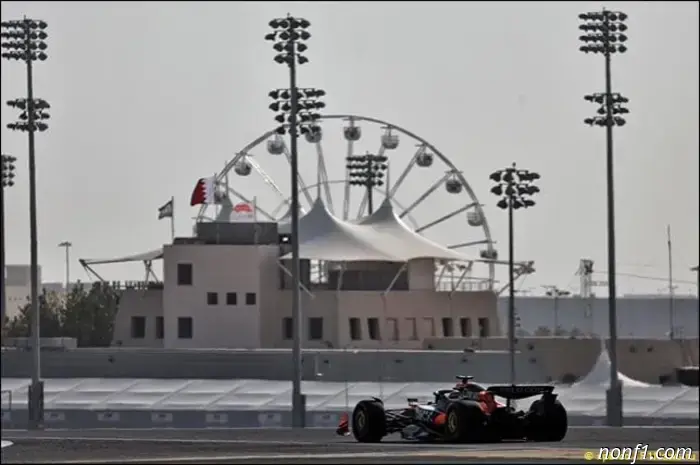 Bahrain Grand Prix: Pole at Piastri
Oscar Piastri has won qualifying in Bahrain, taking the second pole of his career...
Bahrain Grand Prix: Pole at Piastri
Oscar Piastri has won qualifying in Bahrain, taking the second pole of his career...
 Charles Leclair: Experiments with settings have yielded results
Charles Leclair qualified third in Bahrain, which was his best result of the season.
Charles Leclair: Experiments with settings have yielded results
Charles Leclair qualified third in Bahrain, which was his best result of the season.
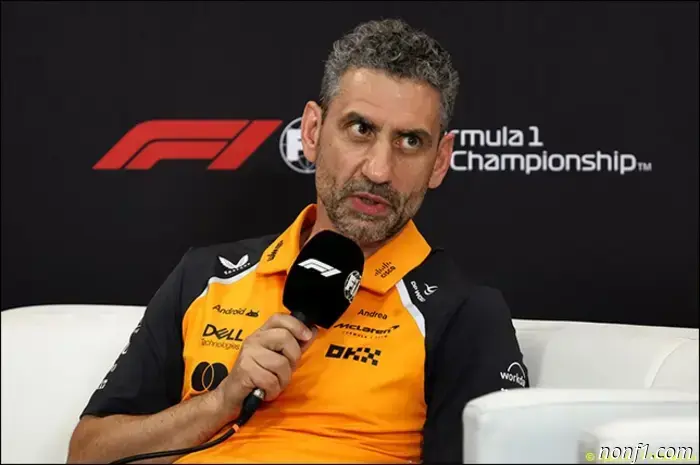 Andrea Stella: It's inappropriate to talk about domination
The McLaren team leader talks about the start of the season, his drivers and the degree of risk...
Andrea Stella: It's inappropriate to talk about domination
The McLaren team leader talks about the start of the season, his drivers and the degree of risk...
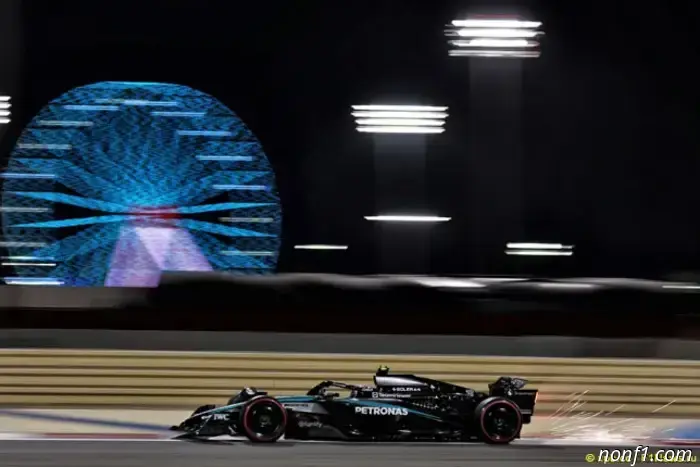 Mercedes racers were called to the stewards
Mercedes drivers George Russell and Kimi Antonelli were called to the Bahrain Grand Prix stewards.
Mercedes racers were called to the stewards
Mercedes drivers George Russell and Kimi Antonelli were called to the Bahrain Grand Prix stewards.
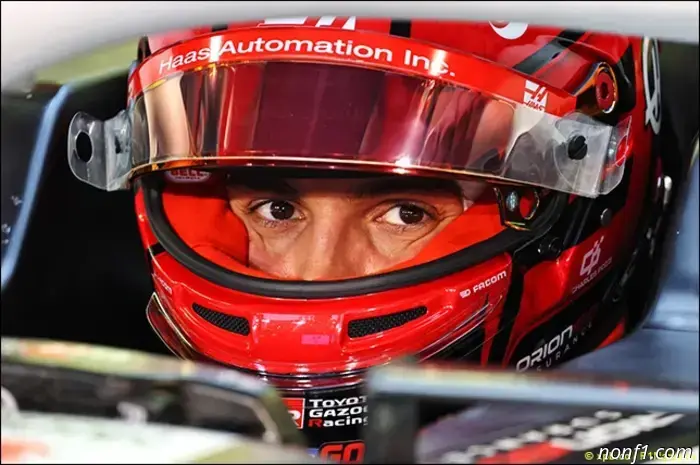 Esteban Ocon: I ruined everything myself
Qualifying in Bahrain for Haas F1 was unsuccessful. Esteban Ocon crashed the car, and Oliver Berman showed the worst time.…
Esteban Ocon: I ruined everything myself
Qualifying in Bahrain for Haas F1 was unsuccessful. Esteban Ocon crashed the car, and Oliver Berman showed the worst time.…
Mark Hughes on the reasons for McLaren's advantage in Bahrain
Mark Hughes talks about what explains the size of McLaren's advantage in Bahrain, which was already evident in training...
